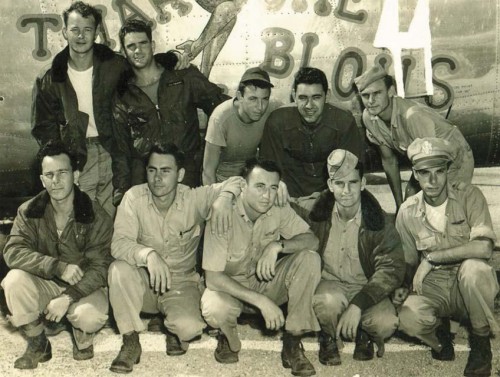Everything you need to know you DIDN’T learn in Kindergarten
August 3, 2011Keith Joseph Landry
August 5, 2011Known locally for the Main Street restaurant that bears his name, Anthony “Tony” Bilello flew 38 missions during World War II in the Pacific Theatre as a radio operator and gunner on a B-24.
The youngest of seven siblings, all brothers, Bilello enlisted in the Air Force after the attack on Pearl Harbor. He was a 19-year-old senior at Thibodaux College when he was informed that anyone with a B average could graduate early and join the military.
He had the grades and dreaded the possibility of being drafted to the Marines or Army, so he began his military service with boot camp at Keesler Air Force Base in Biloxi.
The Thibodaux native then attended separate schools to study Morse code and radio maintenance before he underwent gunnery training in Laredo, Texas. After his training, Bilello was briefly assigned to Langley, Va.
“We went on simulated bombing [runs] in the Atlantic,” Bilello recalled. “From there, we hopped city to city from Langley Field to March Field, California. We did aircraft firing off the Pacific for a few weeks, shooting at sleeve [targets].”
It was late 1943 when Bilello was deployed oversees. His aircraft hopped islands until it reached Saipan, an island north of Guam. Bilello’s first target was a “little island called Truk.”
“From Guam, we bombed various targets, small islands, Iwo Jima, Chichi Jima,” Bilello said. “We bombed Kure Naval Base, southern Japan and we bombed Shanghai, China… We did a lot of night flying, too, over Iwo Jima. Every night for a week we bombed Iwo Jima.”
Missions in the Pacific Theatre could last up to 10 hours, he said, and in addition to manning the tail turret and operating the radio, Bilello had another, unofficial duty. “It was my job to put some music on for the crew in the intercom. We cut it off when we got close to the target.”
Anti-aircraft artillery posed an ever-present threat. “[Our navigator] went and he flew with another crew and we were right in the back of the plane when it got a direct hit from antiaircraft,” Bilello said. “[They] just blew up.”
Bilello had more close calls. His aircraft would later have one of its engines damaged by gunfire, and the plane was forced to land on a small Iwo Jima runway. “They had a strip that’s very, very small. It was made for Zeroes (single-seat planes) … As soon as he touched down, [the pilot] put the brakes on … We just did make it to the end of that runway.”
Surviving the landing was one thing, but camping in an aircraft on an island of violence bore its own concerns. While Bilello’s squadron slept, there was a Japanese attack on American forces.
“I got up. I said, ‘Man, I’m going to get on this machine gun if I see any.’ But thank God they didn’t come to the airstrip,” Bilello said.
It wasn’t the only time Thibodaux’s son had a landing scare. Another time, the landing gear failed to release, and the plane skidded about 50 feet before coming to a rest. “I was in the waist by the waist gunner’s position and when the plane stopped, I thought it might blow up or something. I jumped out of the window,” he recalled.
Bilello’s corps was relocated to Okinawa after the United States captured the small island south of Japan. The war would end soon thereafter, and Bilello’s final mission was a flight over south Japan.
“Believe it or not, I saw a cloud that looked different,” Bilello said. “When you go on missions, you’re interrogated and you’ve got to tell them everything unusual … I told the guy that the only thing unusual I saw was a great big old cloud that looked funny. It didn’t look like a cloud. The next morning we found out that the atomic bomb was dropped on Hiroshima.”
Now 87 years old, Bilello is modest in remembering his service. “I don’t regard myself as doing anything spectacular … So many other guys went through so much more than I did. But we all had a job.”
EDITOR’S NOTE: Special thanks to the Regional Military Museum of Houma, the Ellender Memorial Library Archives and Special Collections at Nicholls State University and Neil Guilbeau for compiling the information.
Anthony “Tony” Bilello, pictured above, bottom row at far left, in a photograph taken in “Guam or Saipan,” during his tour of duty in World War II. COURTESY PHOTO








